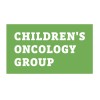ABT-751 in Treating Children With Neuroblastoma That Has Relapsed or Not Responded to Previous Treatment
Disseminated Neuroblastoma, Recurrent Neuroblastoma

About this trial
This is an interventional treatment trial for Disseminated Neuroblastoma
Eligibility Criteria
Inclusion Criteria:
Histologically or cytologically confirmed neuroblastoma meeting the following criteria:
- Refractory or relapsed disease
- No curative treatment option and no additional therapy proven to prolong survival with an acceptable quality of life is available
- Evidence of disease progression (enlargement of existing measurable tumors or the appearance of new tumors) during prior treatment OR biopsy-proven viable neuroblastoma if stable disease but refractory to prior treatment
Previously irradiated soft tissue or bony lesion must meet ≥ 1 of the following criteria:
- Viable neuroblastoma determined by biopsy ≥ 6 weeks after radiation therapy
- Growth in the lesion determined by CT scan or MRI
Measurable or evaluable disease
- Measurable disease is defined as ≥ 20 mm in ≥ 1 dimension by MRI, CT scan, or x-ray OR ≥ 10 mm in ≥ 1 dimension by spiral CT scan
Evaluable disease is defined as iodine I 123 metaiodobenzylguanidine (^123I MIBG)-positive lesion at ≥ 1 site
- Must not have measurable disease by CT scan or MRI
- No elevated urinary catecholamines and/or bone marrow evidence of tumor, without measurable or evaluable disease by imaging modalities (CT scan, MRI, or ^123I MIBG)
- Karnofsky performance status (PS) 50-100% (> 16 years of age) OR Lansky PS 50-100% (≤ 16 years of age)
- Life expectancy ≥ 8 weeks
- Hemoglobin ≥ 7.5 g/dL (transfusions allowed)
- Absolute neutrophil count > 250/mm³
- Platelet count > 25,000/mm³ (without platelet transfusion support for ≥ 7 days)
- Bilirubin ≤ 1.5 times upper limit of normal (ULN)
- ALT < 5 times ULN
Creatinine normal for age and gender as follows: OR creatinine clearance or radioisotope glomerular filtration rate ≥ 60 mL/min
- No greater than 0.4 mg/dL (≤ 5 months)
- No greater than 0.5 mg/dL (6 months-11 months)
- No greater than 0.6 mg/dL (1 year-23 months)
- No greater than 0.8 mg/dL (2 years-5 years)
- No greater than 1.0 mg/dL (6 years-9 years)
- No greater than 1.2 mg/dL (10 years-12 years)
- No greater than 1.4 mg/dL (13 years and over [female])
- No greater than 1.5 mg/dL (13 years to 15 years [male])
- No greater than 1.7 mg/dL (16 years and over [male])
- Shortening fraction ≥ 27% by echocardiogram
- Not pregnant or nursing
- Negative pregnancy test
- Fertile patients must use effective double-barrier contraception during and for 90 days after completion of study treatment
- Seizure disorder allowed if controlled and receiving anticonvulsants
- Neurologic toxicity from prior therapy or tumor involvement ≤ grade 2
- No evidence of active graft-vs-host disease
- No allergy to sulfa-containing medications
- No known HIV positivity
- No clinically significant unrelated systemic illness (e.g., serious infection) that would limit study compliance
- Concurrent filgrastim (G-CSF) allowed if medically indicated
- Recovered from all prior therapy
- No prior ABT-751
- More than 2 weeks since prior myelosuppressive chemotherapy
- More than 7 days since prior anticancer biologic agents (e.g., retinoids)
- More than 4 weeks since prior palliative radiation therapy (small port) or therapeutic ^123I MIBG
- More than 6 weeks since prior substantial radiation therapy (> 50% pelvis, craniospinal, or total-body radiation)
More than 4 months since prior allogeneic stem cell transplantation (SCT) (2 months for autologous SCT) and recovered
- Infusion of autologous peripheral blood mononuclear cells without high-dose chemotherapy or preparative regimen is not considered SCT
- More than 30 days since prior investigational drug therapy
- More than 30 days since prior immunotherapy (monoclonal antibody therapy or vaccine therapy)
- More than 1 week since prior growth factor treatment
- No other concurrent anticancer agents, including chemotherapy, immunomodulating agents, or biologic therapy (retinoids)
- No concurrent radiation therapy, including palliative radiation therapy
- No concurrent treatment for graft-vs-host disease
- No concurrent epoetin alfa, sargramostim (GM-CSF), or interleukin-11
Sites / Locations
- University of Alabama at Birmingham
- University of Chicago Comprehensive Cancer Center
- Dana-Farber Cancer Institute
- C S Mott Children's Hospital
- Washington University School of Medicine
- Columbia University Medical Center
- Cincinnati Children's Hospital Medical Center
- Nationwide Children's Hospital
- Oregon Health and Science University
- Children's Hospital of Philadelphia
- Cook Children's Medical Center
- Hospital for Sick Children
Arms of the Study
Arm 1
Arm 2
Experimental
Experimental
Measurable disease by CT or MRI scan (ABT-751 chemotherapy)
Evaluable by I-MIBG scintigraphy (ABT-751)
Patients receive oral ABT-751 (200 mg/m2) once daily on days 1-7. Treatment repeats every 21 days for 52 courses in the absence of disease progression or unacceptable toxicity. Quality-of-life assessment at baseline and prior to each course of treatment. A pharmacological study (pharmacokinetic profile of ABT-751) will be determined.
Patients receive oral ABT-751 (200 mg/m2) once daily on days 1-7. Treatment repeats every 21 days for 52 courses in the absence of disease progression or unacceptable toxicity. Quality-of-life assessment at baseline and prior to each course of treatment. A pharmacological study (pharmacokinetic profile of ABT-751) will be determined.
Outcomes
Primary Outcome Measures
Secondary Outcome Measures
Full Information
1. Study Identification
2. Study Status
3. Sponsor/Collaborators
4. Oversight
5. Study Description
6. Conditions and Keywords
7. Study Design
8. Arms, Groups, and Interventions
10. Eligibility
12. IPD Sharing Statement
Learn more about this trial
